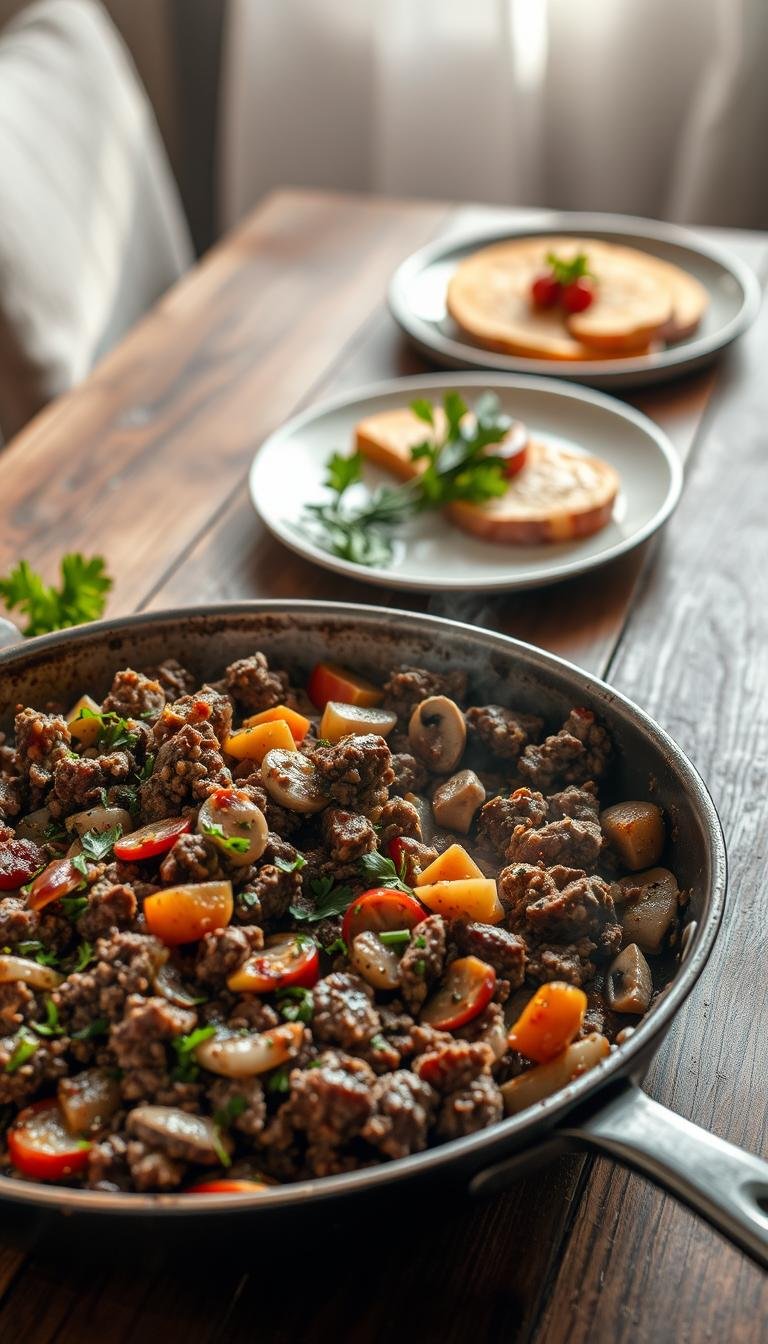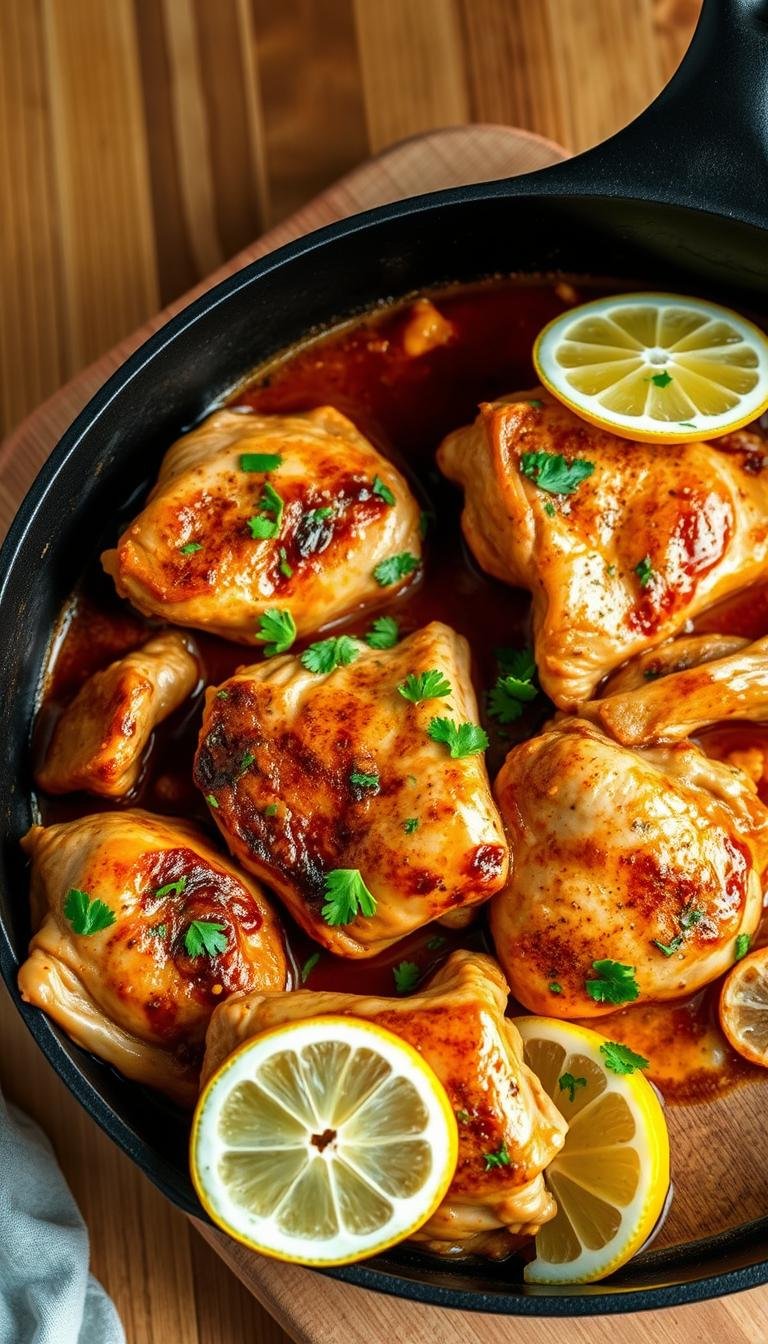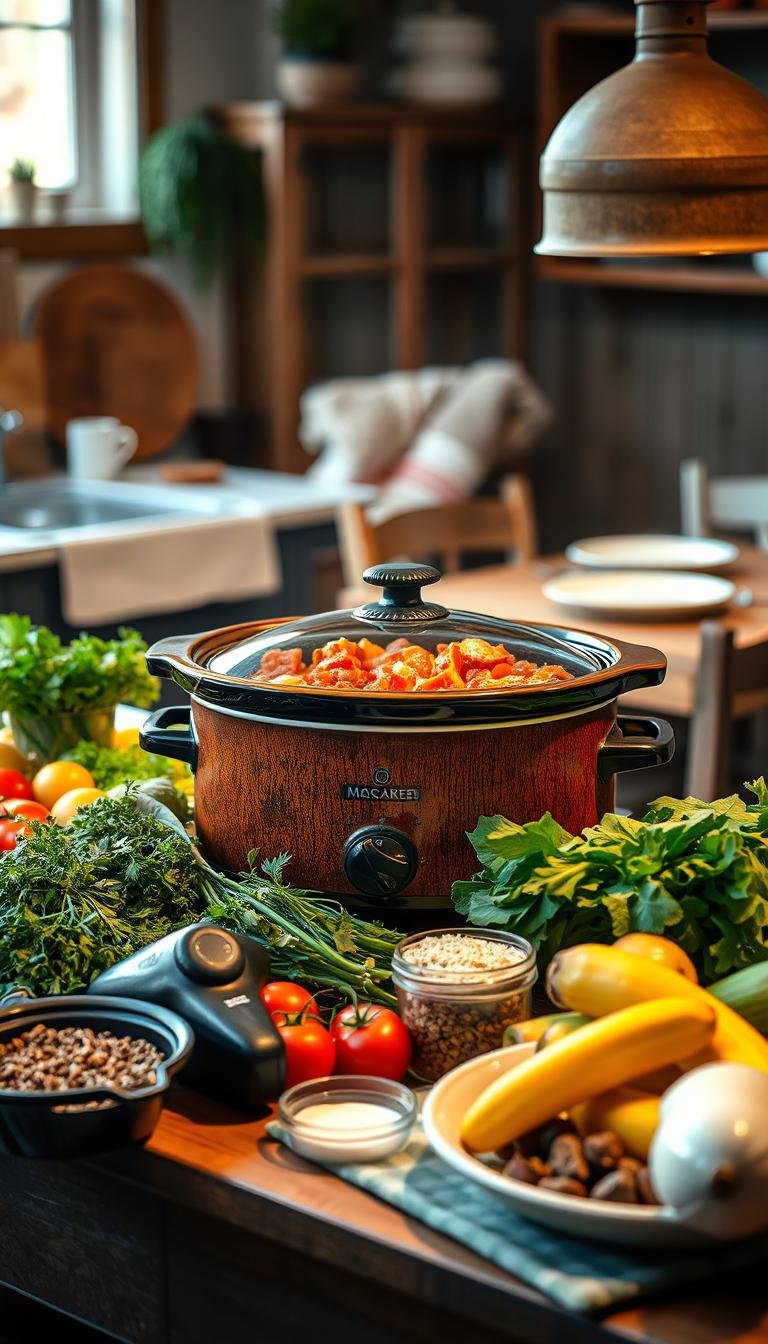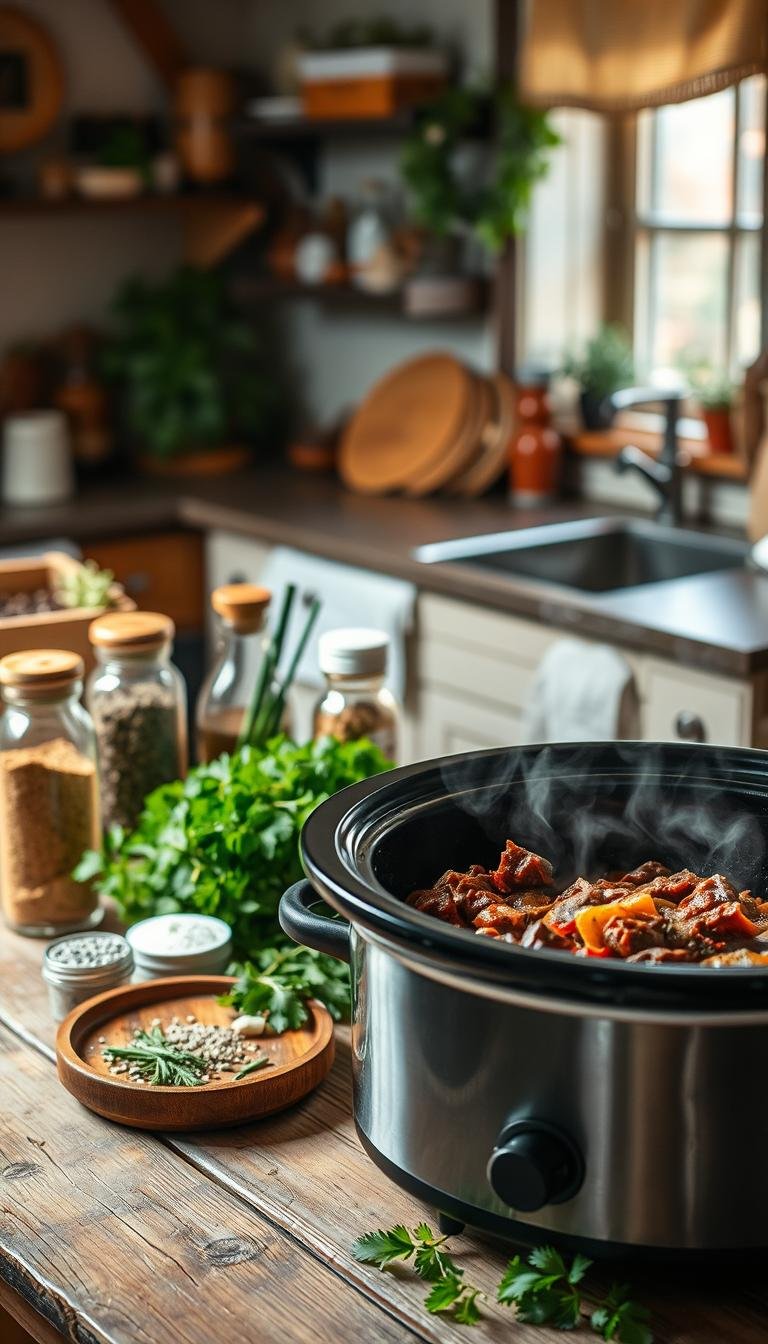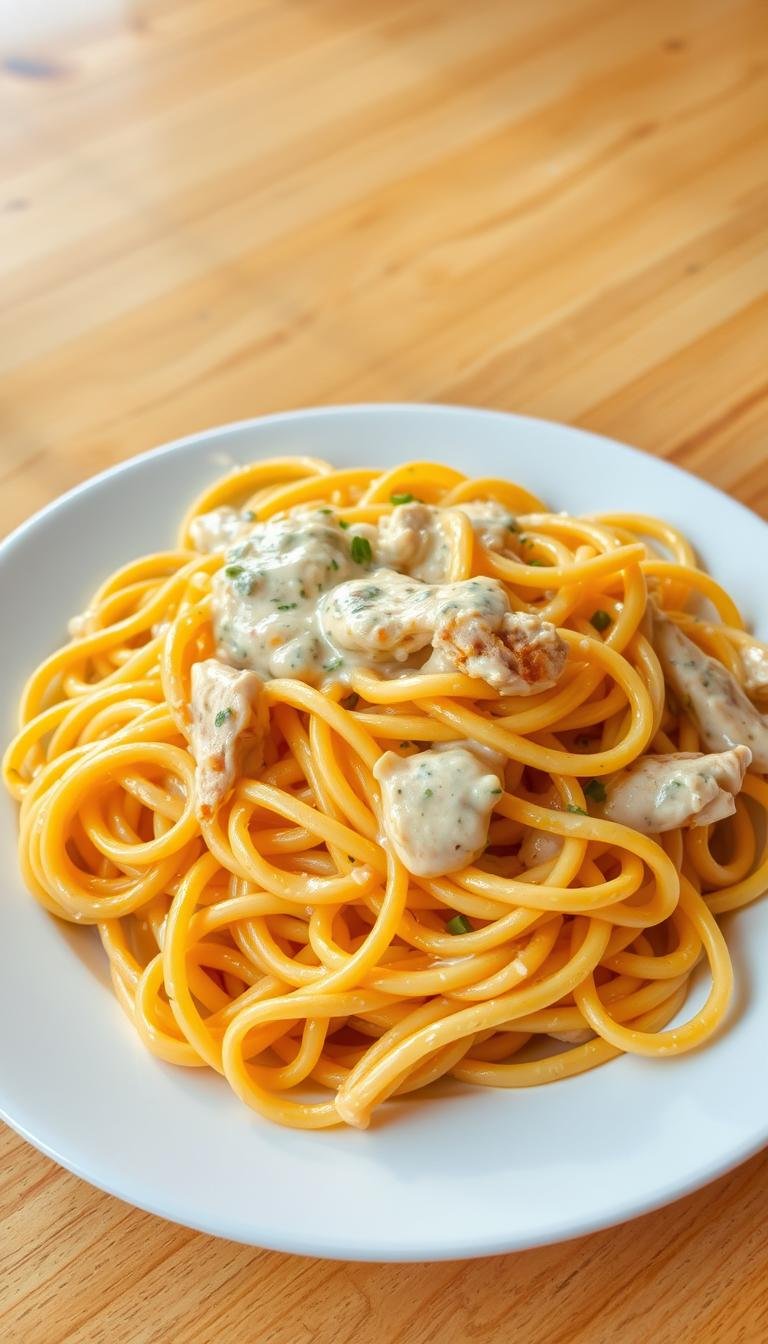Easy Dinner Ideas with Hamburger Meat for Quick Meals
Surprising fact: nearly 70% of home cooks say time is the top barrier to weeknight meals, yet many fast options sit in the pantry right now.
This guide shows simple one-pan methods that turn ground beef and basic staples into warm plates in about 20 minutes.
Start by mastering a quick gravy skillet that pairs well over mashed potatoes, noodles, or rice. Another pan technique sautés potatoes, adds browned beef and aromatics, then finishes with bright seasonings like smoked paprika and Dijon.
There is also a rice skillet that cooks long‑grain rice in beef stock and tomato juices, then melts cheese on top for an easy, filling meal.
Expect fewer dishes, flexible swaps (turkey or chicken), and clear steps that teach browning, heat control, and liquid management. These methods save time, lower cost, and help families feed picky eaters without fuss.
Key Takeaways
- Fast one‑pan meals cut prep and cleanup while staying budget friendly.
- Pan sauces and simple aromatics create big flavor in about 20 minutes.
- Rice, noodles, or potatoes stretch servings and make meals hearty.
- Techniques like proper browning improve every future recipe.
- Swap proteins and modify seasonings to suit diets and pantry stock.
How to plan quick weeknight dinners with ground beef
Plan weeknight meals around one reliable protein and one fast cooking method to cut stress and save time. Start by choosing ground beef as your primary protein and pair it with a single approach: a quick gravy skillet, a potato sauté, or a rice skillet.
Keep a short pantry list—beef broth, canned tomatoes, Worcestershire, mustard, and basic spices. These staples unlock the main recipes and let you finish a meal in under 30 minutes.
Batch-prep aromatics like onion, garlic, and bell pepper on weekends. That small step shaves minutes off active cook time and keeps flavors consistent across dishes.
- Slot the 20-minute gravy skillet on your busiest nights.
- Use the potato skillet when you can sauté a bit longer.
- For rice, adjust liquid to rice type so grains stay tender and fluffy.
Plan for leftovers by picking recipes that store well, add vegetables to boost fiber, and keep a running shopping list so you never run out of the few things that make fast cooking work. This information helps you rotate methods and keep weeknights calm.
Staples, protein picks, and tools to keep on hand
Keep a small stock of versatile staples and tools so a fast pan meal is always within reach.
Pantry and fridge basics to buy once, use often
Stock core ingredients like long‑grain rice, potatoes, beef broth, canned diced tomatoes, tomato paste, Worcestershire, Dijon, and basic spices. These let you assemble a full plate without a special trip to the store.
Keep onion, bell pepper, and a head of garlic in the crisper. A bag of mixed frozen vegetables adds color and bulk in seconds.
Choosing protein: lean blends or higher fat, and smart swaps
Pick lean ground for fewer drippings, or 80/20 if you want richer browning and more flavor. Manage excess fat by draining or whisking it into a quick sauce.
Swap in ground turkey, chicken, pork, or venison when needed. If you switch proteins, consider using chicken or vegetable broth instead of beef broth for a better flavor match.
Gear that speeds prep and improves results
Use a large skillet or a Dutch oven to maximize browning and hold starches and liquids for true one‑pan cooking.
Keep a heat‑resistant spatula and a hamburger chopper to break ground into even crumbles. Store a neutral oil on the shelf so lean blends won’t stick.
| Item | Why it helps | How to use | Keep on hand |
|---|---|---|---|
| Beef broth / stock | Adds savory depth and liquid for rice | Use 2 cups per 1 cup rice; adjust for swaps | 1–2 cartons |
| Long‑grain rice / potatoes | Stretch servings and absorb sauces | Measure with a tablespoon and teaspoon for seasonings | Pantry staples |
| Large skillet / Dutch oven | Even browning and room for ingredients | Preheat on medium‑high for best sear | 1 of each if space allows |
| Spatula & hamburger chopper | Speed and consistent texture | Break ground into small pieces while browning | Keep in utensil drawer |
Master the skillet: heat, fat, and browning for maximum flavor
Learn how controlled heat and proper fat handling turn a simple skillet into the building block of bold flavor.
Handling fat: Brown ground beef in a large skillet over medium‑high until no pink remains. Drain for a lighter finish, or keep drippings and add butter to emulsify. To make a glossy sauce, whisk flour into the fat, then slowly stream in beef broth and Worcestershire while simmering until it thickens.
Heat management: Start on high heat to form a good crust, then drop to medium to build a sauce or cook potatoes without burning. Spread the ground evenly so each piece contacts the pan and seasons of salt and pepper during browning to layer flavor.
- Avoid overcrowding; brown in batches if needed to keep pan temperature steady.
- Cook potatoes in oil until golden before adding beef so texture stays crisp outside and tender inside.
- Keep a splash of hot broth handy to loosen a sauce and prevent pasty reductions.
Finish: Let the pan rest off heat for a minute so the sauce firms and flavors meld before serving.
Dinner ideas with hamburger meat: three fast one-pan methods
Choose one pan, a short ingredient list, and about 20–30 minutes to get a complete plate. Below are three reliable methods that use ground beef and pantry staples to make satisfying meals.
Ground beef and gravy in minutes
Brown 1 lb ground for 8–10 minutes, drain, then melt 2 tbsp butter and add 2 cloves garlic and 1 tbsp dried minced onion. Stir in 2 tbsp flour, then whisk in 2 cups beef broth and 1 tbsp Worcestershire. Simmer about 5 minutes until the sauce thickens.
Serve over mashed potatoes, noodles, or rice. Stores up to 3 days; freezes 3 months.
Beef and potatoes skillet
Sauté 1 lb diced potatoes in oil until golden (~6 minutes). Add 1 lb ground, 1 onion, and 1 red bell pepper. Season with 1 tbsp Worcestershire, 1 tsp Dijon, 2 tsp smoked paprika, 1 tsp garlic powder, oregano, salt, pepper, and 1–2 tsp hot sauce. Cook 6–8 minutes and top with green onions.
Ground beef and rice skillet
Brown ground, then add onion, green bell pepper, and garlic. Stir in a 14.5‑oz can tomatoes, 1.5 cups low‑sodium beef stock, 1 cup long‑grain rice, 2 tbsp tomato paste, and 1.5 tsp Worcestershire. Cover and simmer 20–25 minutes; finish under cheese until melted.
Simple add‑ins: toss in frozen mixed vegetables, extra onion, or bell pepper to bulk up any pan and boost fiber and color.
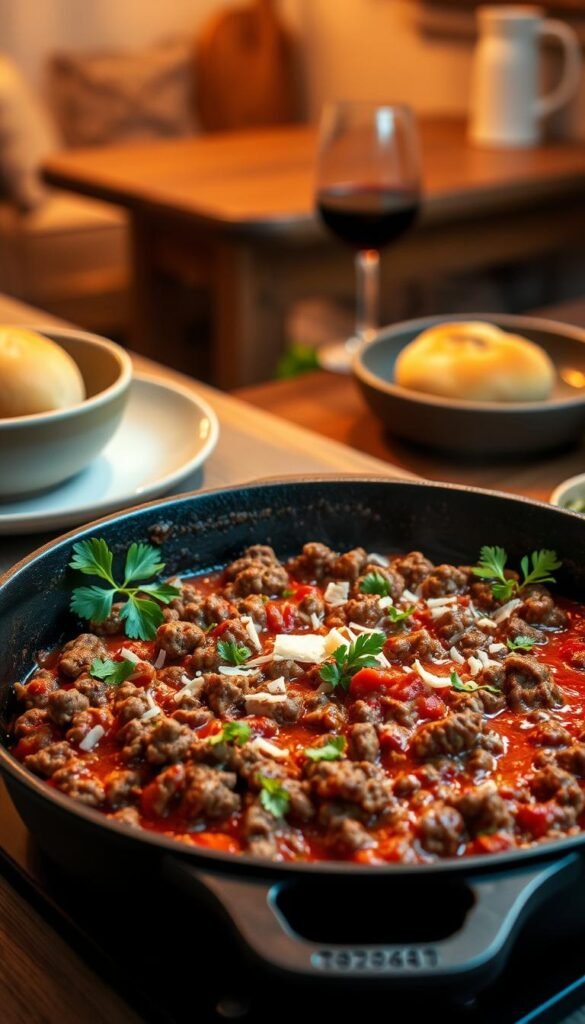
Flavor boosters, sauces, and nutrition notes
Layering aromatics, powdered seasoning, and a brief broth reduction gives big flavor fast.
Build a base by sautéing garlic, onion, and bell pepper. Then add smoked paprika, oregano, garlic powder, kosher salt, and black pepper to deepen taste.
Use garlic powder alongside fresh garlic for more consistent aroma when time is tight. Sprinkle powder during browning so it toasts and releases aroma.
Balancing protein, fiber, and carbohydrates
Pair ground beef or a leaner ground protein with brown rice or extra veggies to boost fiber and slow carbs. This raises satiety and adds vitamins.
Watch sugar and sodium by choosing low‑sodium broth and modest condiments. Taste before adding final salt to avoid overseasoning.
Sauces and finishes that elevate a quick recipe
Amplify depth with Worcestershire and a touch of Dijon. Reduce a cup of broth briefly to concentrate savory notes and build a silky pan sauce.
Finish with a restrained cheese melt or a splash of hot sauce to brighten the plate without adding sugar. These small touches make leftovers feel fresh.
| Finish | When to use | Effect on flavor | Nutrition note |
|---|---|---|---|
| Broth reduction | After browning, before serving | Concentrates umami and thickens sauce | Use low‑sodium broth to control salt |
| Dijon + Worcestershire | Stir into sauce near end | Adds tang and savory depth | Little sugar, check sodium on labels |
| Cheese melt | Top rice or potatoes, melt under lid | Adds richness and mouthfeel | Boosts calories; use sparingly for balance |
| Hot sauce | Finish at the table | Brightens and cut sweetness | Minimal calories; watch sodium |
Cook time shortcuts and true “one pan” efficiencies
Set up a simple mise en place so the pan work becomes a smooth, under‑30‑minute routine. Premeasure liquids and spices, chop small pieces, and have a lid ready. This small prep saves valuable minutes and cuts stress during the cook.
Under‑30‑minute pathways
Gravy skillet: brown ground beef, make a quick roux, then simmer — about 20 minutes total. Use the same skillet to finish and serve.
Potato route: sauté diced potatoes until golden (~6 minutes), add browned ground, then cook 6–8 more minutes to finish. Quick sears mean faster plates.
One‑pan wins
Choose a large skillet or Dutch oven so you can brown, simmer, and serve from the same vessel. Start on high heat to sear, then lower the flame to simmer sauces or cook rice gently.
- Keep a lid handy for covered rice cooks.
- Avoid stirring while browning to speed color development.
- Use small, even potato cubes so cook times stay predictable.
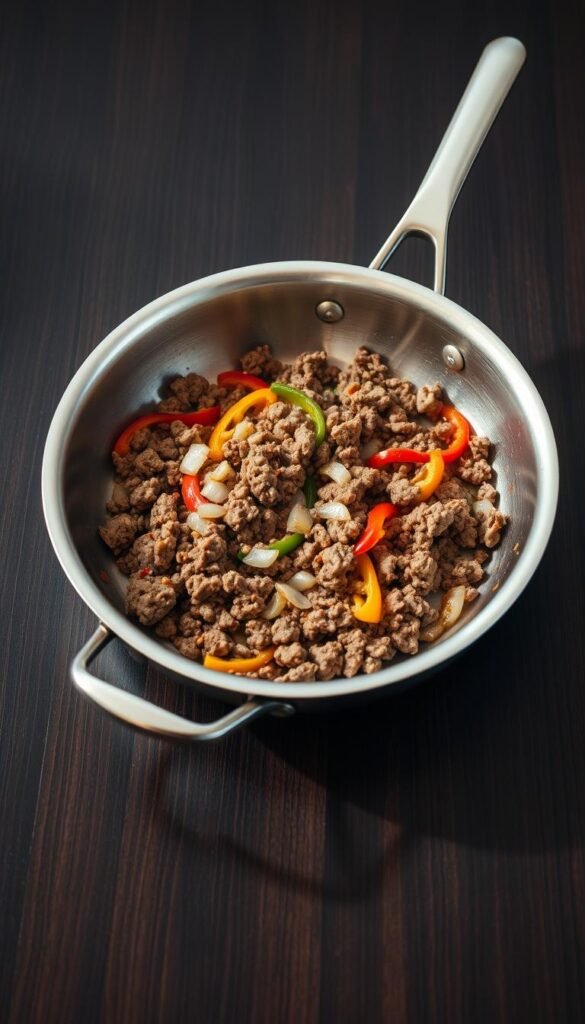
Serve straight from the pan to save one last step and keep food hot while you portion.
Storing, freezing, and reheating your ground beef dinners
Store cooked ground dishes promptly to keep flavor and safety at their best.
Refrigerate leftovers in airtight containers within two hours of cooking. Chill rice and gravy-based dishes and use them within 3 days for best texture and safety.
Reheat gently in a skillet over medium‑low heat. Add a small splash of beef broth or hot water to loosen the sauce and prevent drying. Stir occasionally until the meal is steaming through.
Freezing guidance
Freeze gravy-based recipes in labeled portions for up to 3 months. Thaw overnight in the fridge and reheat slowly to keep the sauce smooth.
Avoid freezing potato skillets; thawing often yields a mealy, waterlogged dish that loses appeal.
Moisture and texture tips
- Cool leftovers quickly and store airtight for up to 3 days.
- If rice is dry, add a few teaspoons of hot broth, cover briefly, then stir to restore tenderness.
- Re-crisp chilled mixtures in a thin film of oil to refresh edges; top a warm hash with a fried egg for a new meal.
| Storage type | Max time | Best action |
|---|---|---|
| Refrigerator (airtight) | Up to 3 days | Reheat in skillet with small splash of beef broth |
| Freezer (gravy dishes) | Up to 3 months | Label portions; thaw overnight in fridge before reheating |
| Freezer (potato skillet) | Not recommended | Prefer fresh or refrigerate and re-crisp on stovetop |
| Microwave reheating | Use within 3 days | Cover loosely and stir at intervals to avoid hot spots |
Conclusion
Keep a short pantry and a hot pan, and most weeknight recipes fall into place fast.
These three paths — quick gravy, a potato skillet, and a rice skillet — give reliable ways to build a hearty dinner in under 30 minutes.
Store leftovers in airtight containers: refrigerate up to 3 days, freeze gravy‑based portions for up to 3 months, and avoid freezing potato skillets. Reheat gently in a skillet and add a splash of beef broth or water to loosen the sauce.
Use measured heat, taste for salt and pepper, and finish as you like — a light cheese melt, fresh herbs, or a squeeze of acid. Repeat these simple steps and you’ll save time, cut cleanup, and turn basic ingredients into satisfying family meals.
